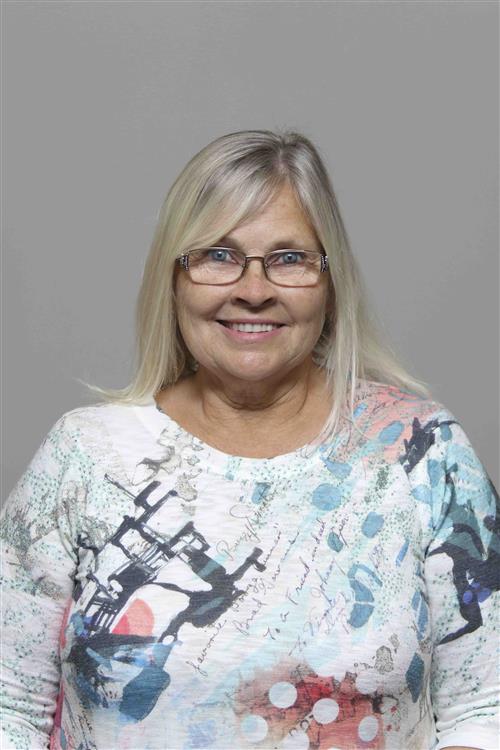-
Art Teacher

Cynthia Gail cgail@nrheg.k12.mn.us
My journey to become a teacher started in 1986 while I was sitting in a cable office watching an amazing teacher on TV; her name was Christa McAuliffe. Her enthusiasm and love of teaching inspired me. I speculated that, if I could be half the teacher she is, I could make a difference.By this time in my life I already had a Sales and Management degree from the Albert Lea Area Vocational Technical Institute in 1984. While attending school, I worked for Home Interiors and Gifts, a business started by Mary Crowley. I worked for a Pamida Store, then went on to be junior assistant in a Deb shop, selling teen clothing. Next, I became an assistant manager for a Shopko shoe department where, within a couple months, I was promoted to manager. One day I was approached by the manager of a cable TV company, who asked me to work for him as a customer service representative. This would mean $100.00 less a month, however I was offered insurance and a stock option as part of the pay. The biggest factor in my job change was the opportunity to work in the same town where my children attended school: I took the job.
In the winter of 1994, I started school at Austin Community College with an emphasis in business. In June of 1990, I graduated with an Associate in Arts Degree. I went to school one or two nights a week because I worked full time.
During the fall of 1989, I decided I was going to commit to a teaching career. I called Mankato State, asked about transferring my credits, and inquired how long it would take to complete the necessary courses, considering I could only attend in the evenings. To my dismay, I was told that if I attended only part-time, it would take me ten years. I fought back the tears but was determined there had to be a way. Quitting my job meant giving up stability and insurance for my family. I had a couple months to make the life-changing decision. I decided to quit my job and go full time to college. I cashed in my stock and was able to pay cash for my college tuition. January of 1990 I started at Mankato State and by June of 1992 I graduated with a BS in teaching and a BFA in Art.
In 1991 I started taking doll making classes with the International Foundation of Doll Makers; in 1992 I finished the master doll maker program for German dolls; in 1993 I finished the master doll maker program for French dolls. I was encouraged by my instructors to start teaching, so I started up my own business and taught through community ed. In Minnesota, I taught in Albert Lea, Mankato, Owatonna, Inver Grove Heights, and Austin; in Iowa, I taught in Lake Mills.
I have lived a varied and interesting life, beginning with becoming a farmer in about 1980. By 1986, I believed I would spend the rest of my life on a farm raising corn, soybeans, and hogs. I thought farm life would be good for the children. Unfortunately, at the time corn and bean prices were very unstable, and there were large fluctuations in the hog market which led to many farms losing not only their profits, but also their investments. Between southern Minnesota and Iowa farmers were losing their farms due to the hog market around 1996-1997. When parents suffer, children suffer. I saw the devastation everywhere. What a helpless feeling. I joined the board at the Farm Bureau and lobbied for ethanol.
As for the teaching career I had worked so hard for, I did not want a position which took me more than half an hour away from home. I took whatever jobs were available, including being a substitute, long-term substitute, and teacher. In the summers, I would take short-term jobs in factories. I even worked at a hotel on the weekends.
Over the past ten years, I have had teaching positions in Grants, New Mexico, and Farimont and Wells in Minnesota. A special highlight was teaching in three schools in Cubero, Bluewater, and San Rafael, New Mexico. It was a privilege to learn more about native American culture and art while working in the close-knit environments these institutions provided.

